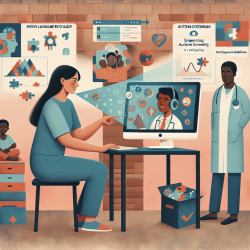Evoked potentials (EPs) are crucial in assessing auditory and neurological functions. This book serves as a lab manual, supplementing theoretical texts with practical exercises. It is particularly useful for those involved in auditory brainstem response (ABR) measurements, a common clinical practice.
Key Takeaways from the Book
- Historical Context: The book begins with a historical overview of auditory evoked responses, providing context and background for the exercises that follow.
- Equipment and Setup: Detailed instructions on setting up the equipment for gathering EPs are provided, making it easier for practitioners to follow protocols accurately.
- Practice Waveforms: One of the most valuable aspects of the book is the series of practice waveforms. These allow new clinicians to identify important morphological landmarks and compare their interpretations with labeled examples.
- Clinical Implementation: The book covers the clinical implementation of various EPs, including ABR, electrocochleography (EcochG), auditory middle latency responses (AMLR), and auditory late potentials.
Improving Clinical Skills
For practitioners looking to enhance their skills, this book offers several strategies:
- Regular Practice: Consistently working through the practice waveforms can help clinicians become more adept at identifying key features in EPs.
- Understanding Protocols: Familiarize yourself with the protocols discussed in the book, including filter settings, electrode montage, and stimulus repetition rates. Understanding these can improve the accuracy of your measurements.
- Experimentation: While the book provides standard protocols, it also encourages practitioners to experiment with different settings to see how they affect the waveforms. This can deepen your understanding of the underlying principles.
Encouraging Further Research
The book also highlights areas where further research is needed. For example, it discusses the impact of changing measurement protocols but does not show the resultant waveforms. This presents an opportunity for practitioners to conduct their own research and contribute to the field.
By integrating the lessons from "Laboratory Exercises in Evoked Potentials" into your practice, you can not only improve your clinical skills but also contribute to the broader understanding of evoked potentials.
To read the original research paper, please follow this link: Laboratory Exercises in Evoked Potentials (1997).










